Shark fisheries in the Gulf of Gabès
In the Gulf of Gabès area, elasmobranchs are exploited either as the target of specific fisheries or, more often, as by-catch of fisheries targeting other commercial species.
Elasmobranch-specific fisheries began in the early-1980s, using gillnets, targeting smoothhounds, Mustelus spp. In the late 1980s, specific gillnets, with different stretched mesh sizes, were used to target sandbar shark, Carcharhinus plumbeus, and recently guitarfish, Rhinobathos spp. These fisheries are seasonal and operate during spring–summer.
The Smoothhound fishing gillnets is called “Gattatia” from the vernacular name of the Smoothhound “Gtat”. These fisheries are active during spring and summer.
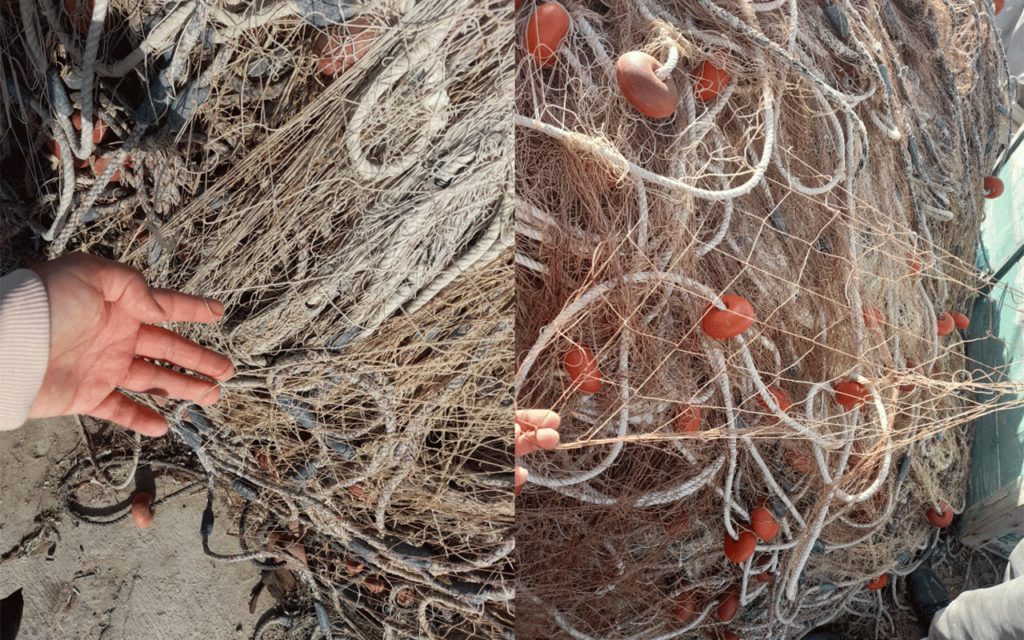
Gattatia gillnet (With a stretched mesh size of 70-120 mm). Photo © Rihab Louhichi
The second specific gillnet is used to capture the Sandbar shark and the guitarfish. These special gillnets are locally known as “Kallabia” from “Kalb’ bhar” (literally sea dog), which means shark in Arabic. The same gillnets are used to target guitarfishes. The gillnets are active during the spring (March-April) for the Sandbar shark and during summer (July-August) for guitarfish.
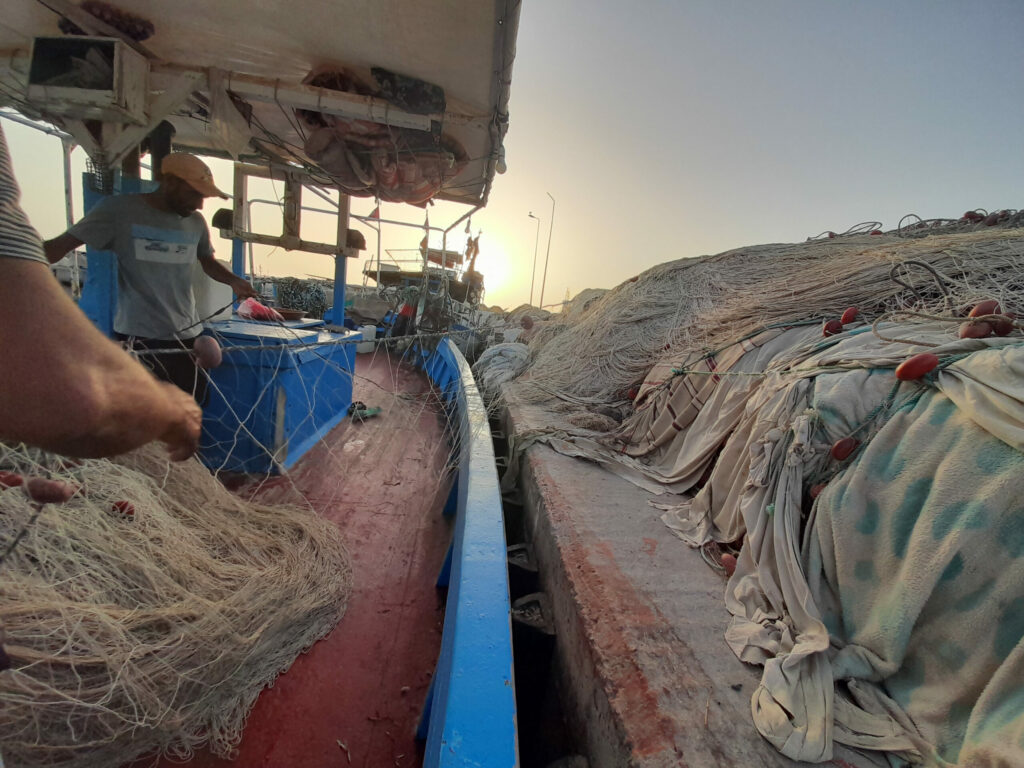
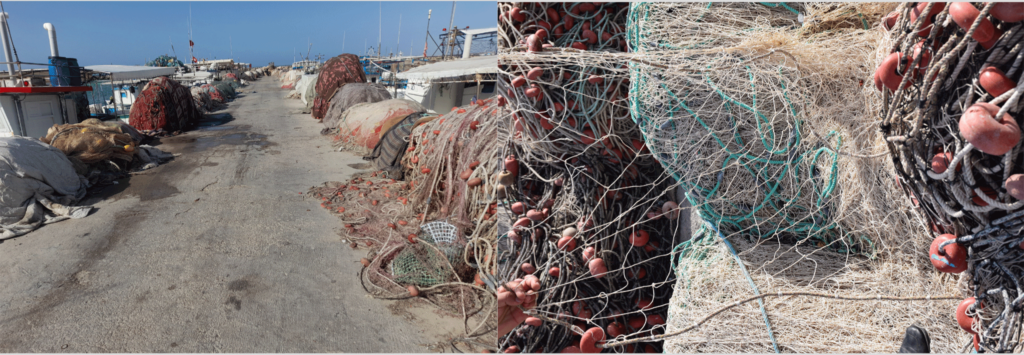
Gillnet “Kallabia”/ “Garracia” (With a stretched mesh size of 150-400 mm). Photo © Rihab Louhichi
A third specific gear, the surface longline, is currently used to target sandbar sharks. In the Gulf of Gabes, the scarcity of swordfish has led to the exploitation of sharks by vessels using pelagic longlines. Sharks were targeted yearly, principally during July-August.
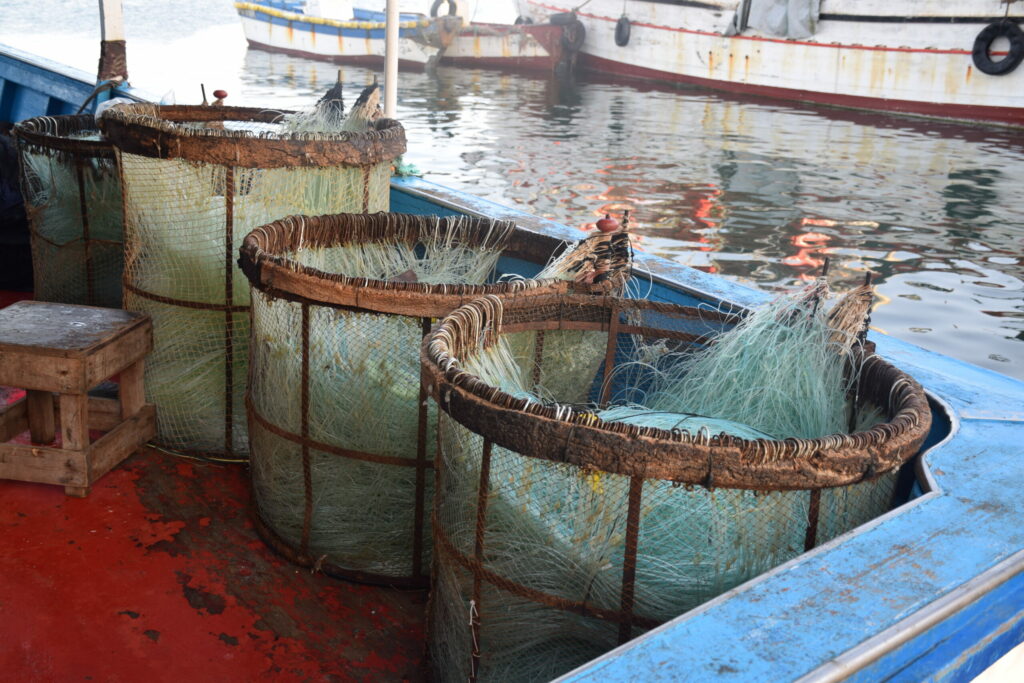
Surface longline baskets. Photo © Rihab Louhichi
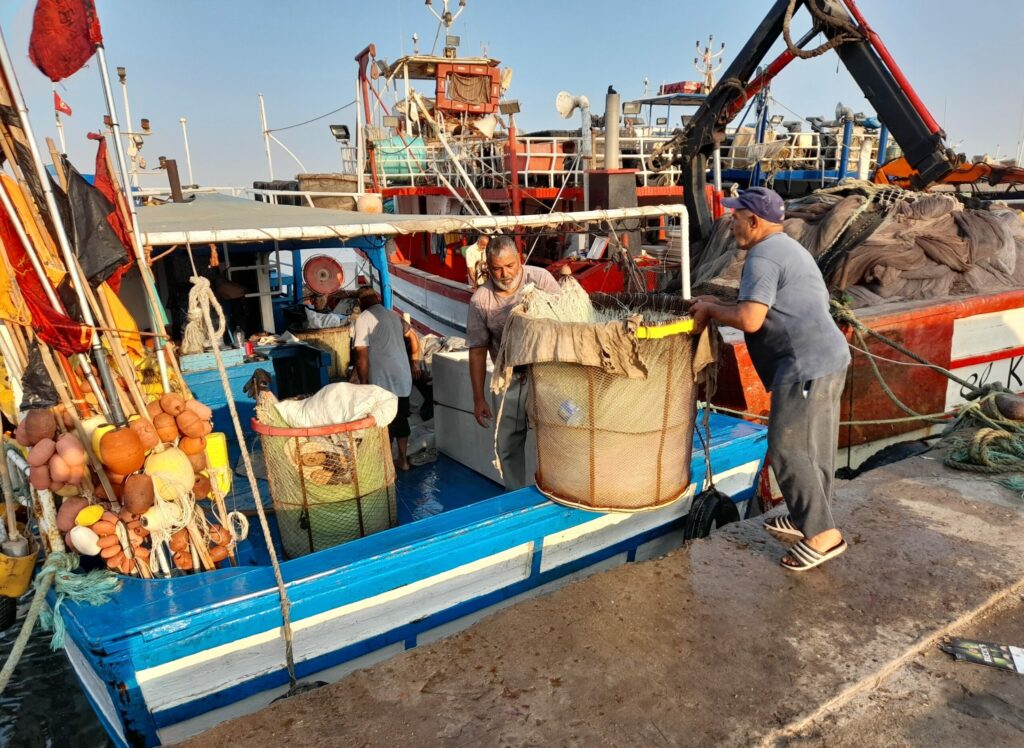
Pelagic longline in preparation. Photo © Rihab Louhichi
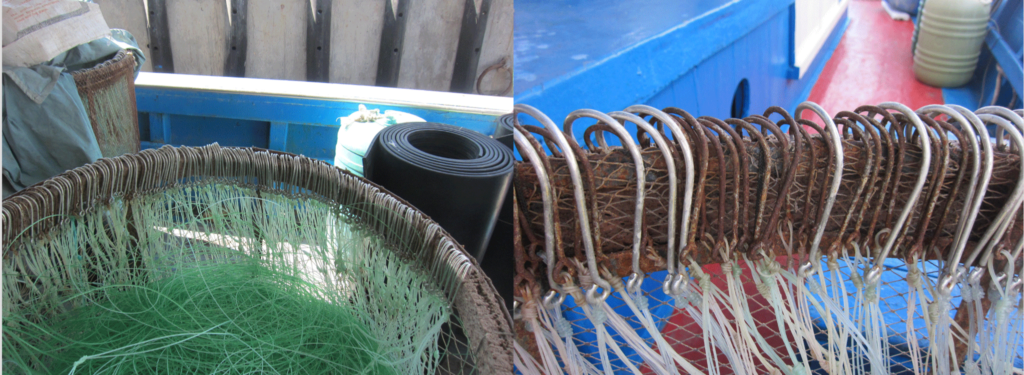
Sandbar shark fishing hooks. Photo © Rihab Louhichi
All the fishing activities with these gears are based on the seasonal rapprochement of species from the coasts during the breeding period. These fisheries target the aggregations of individuals of the different species during the reproduction periods, which affects their populations. The overlap between the breeding periods of elasmobranch species and these fisheries could be detrimental to the elasmobranch populations in the region. Indeed, all the fishermen agreed that there is a significant decline in all the species caught in recent years. The methods used to capture elasmobranchs and the levels of exploitation in the Gulf of Gabes region do not take this vulnerability into account.
Little information is available on this fishery, and baseline information is essential for understanding its impact on shark populations in the area and for managing sharks in this region.
The monitoring of these fishing activities has always remained essential through the onboard observations and the examination of landings in ports.
In the project, surveys with fishermen and sea trips are always made with these gears to study their impact on species. However, more investigations become necessary because of the difficulty of this work due to unpredictable weather fluctuations and the need for more observers working at the same time in order to cover a greater number of ports.
